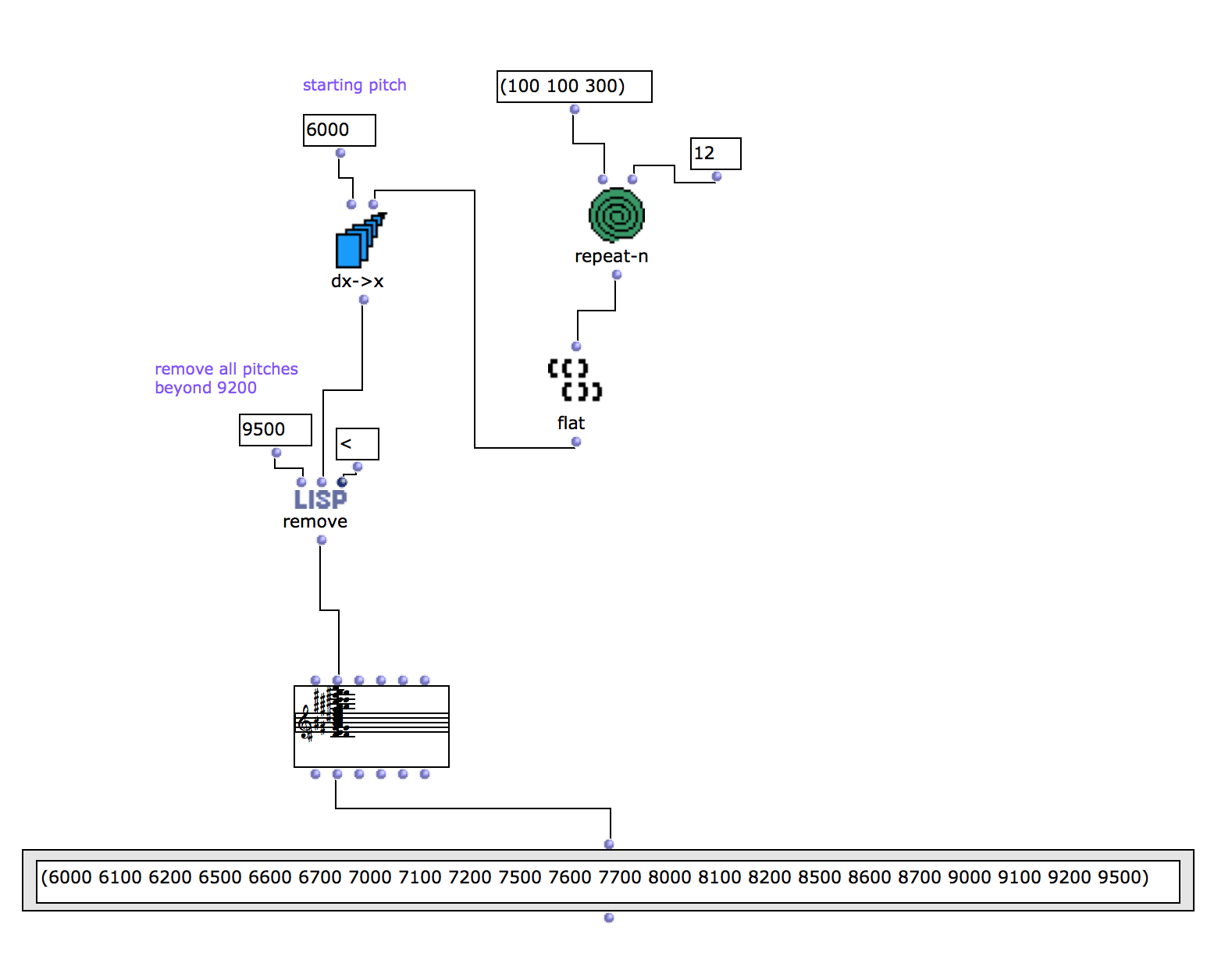Hello again from Miami,
Is there a way to rotate through elements of a list in a circular way with each evaluation? For example given 6000 as the starting pitch I would like to add the values (100 100 300) circularly until the maximum register of a particular instrument is reached.
I obtained the result I was looking for (see attachment) using repeat-n for the list of intervals and then removing anything higher than a certain pitch using “remove.” But now I am curious to know if I could rotate through a list indefinitely, not just (as normally in OMloop) until the last element is reached. It might be useful sometime.
Thanks!
Federico


